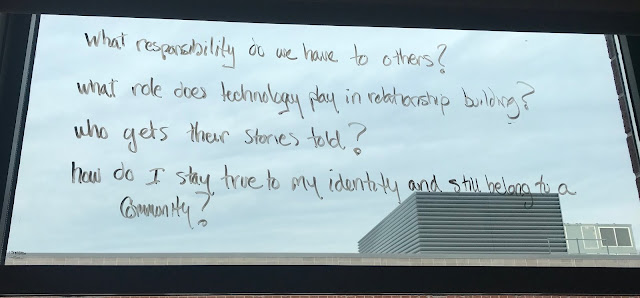Writing
an MLA Annotated Bibliography
What exactly is an annotated bibliography?
An annotated bibliography is a works cited page that includes an annotation: a short paragraph
that informs the reader of the relevance,
accuracy, and quality
of the sources cited.
Why do I have to
write one of these anyway? Annotated bibliographies require you to think meaningfully
about your sources. As you read through
them, you will consider what content the source covers, how accurate and
current the information is, and how the work will specifically help you with
your project. This is also a very
efficient way for your teacher to review your sources to help you if you are
struggling with your project.
I see the purpose of
an annotated bibliography, but how do I write one? Annotated
bibliographies typically follow the general guidelines listed below. In some cases, your teacher may ask you to
add additional information or let you know that some information is not
required. Be sure to check with your
teacher to make sure you are meeting all of the requirements for your specific
annotated bibliography!
General Guidelines
v Citations should
follow standard MLA format. You
may use the 7th Edition of the MLA Handbook or follow the guidelines
as they are explained on the Purdue OWL’s webpage: https://owl.english.purdue.edu/owl/resource/747/05/
v Annotations should be written in third person.
Do not use statements that begin with “I thought….” “I feel…” etc.
v Length can vary depending on the project
and source you are evaluating, but 200-300
words per entry is usually acceptable.
v An annotated bibliography
typically includes some or all
of the
following objective criteria; however, remember to check with your teacher for any special
instructions:
Ø Content (topics addressed)
Ø Overall
purpose of the
work
Ø Intended audience for
the work
Ø Authority of the author or
source
Ø Reliability
or bias of the source
Ø Currency of the work
Ø Useful features (illustrations,
maps, references, timelines,
glossary, index, multimedia components)
Ø Usefulness for the project
That’s all great, but can I see an
example of what one of these might look like? Of course you can! Flip over to the back of this page, and you
can see a sample annotated bibliography entry.
Because you are submitting the annotated bibliography separately, you
should also use a correct MLA heading at the top of the paper. Please note that this sample is borrowed from
the Purdue OWL.
Your
Name
Ms.
Watkins
English
9H
29
February 2016
Annotated Bibliography
Adams, Samuel, John Adams and Paul Revere. “The
Importance of Beer and Taverns
in the American Revolution.” American Journal of
Social History. 97.3 (2008), 354-382. JSTOR. Web. 25 Oct. 2008.
This
article discusses the importance of beer and taverns in bringing together
discussion of the American Rebellion. It
draws on the firsthand experience of three Revolutionaries and their experiences in the pub. The article
includes discussion of social class.
Written for a scholarly
audience, the article demonstrates that even though the
Revolutionaries were fighting for Liberty, it was a relative
term and a dangerous one. The
authors all had firsthand experience in the Revolution and write
from different perspectives. The editor has provided a literature review as well as an extensive bibliography. The summary and
general discussion provided a useful overview of the conclusions drawn by the
authors and could be used in the research paper to support a conclusion.
Washington, George and Nathaniel
Greene. Military Strategies: On a Limited Budget. Boston: Colonial Press, 1799. Print.
Geared
for both a broad audience and professional military
historians this book provides an insight into the financial crises
involved in the war. The authors show
the importance and reliance on foreign currency and support in the prosecuting
of the war. The authors share their firsthand experience of
deprivation and include a list of
books that they used in planning military strategy. By common
consensus, the authors were the best
American generals, and so their book is a valuable resource in
understanding the relationship between economics and strategy.
Chapter Two of the book is particularly useful since it contains Washington’s and Greene’s
plans for the Battle of Manhattan.



No comments:
Post a Comment